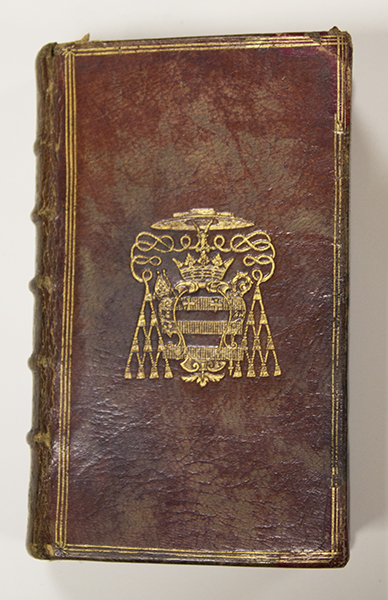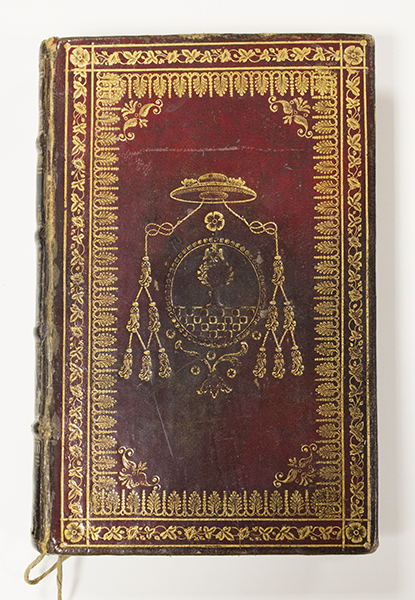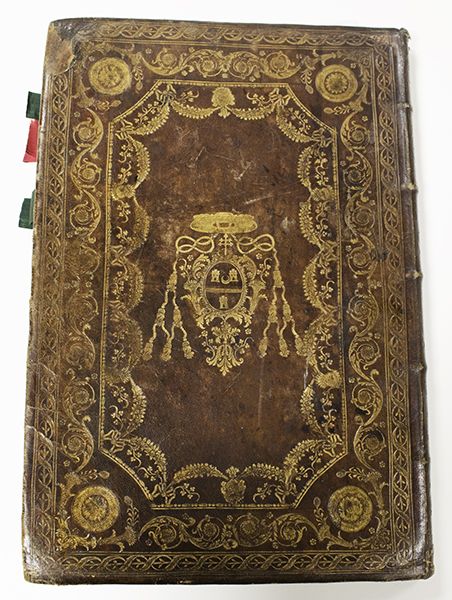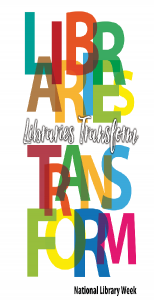The 7th Annual Environmental Art Show is now open to the public and will be available for viewing during the library’s regular hours until the building closes on Sunday, April 23.
Bike Scranton 2017
Bike Scranton is back! For the 2017 season the library has 8 bikes of different sizes to lend to anyone age 18 or over. Bikes may be borrowed whenever the library is open, and all bikes must be returned before the library closes that same day. There is no charge for borrowing bikes. Stop by the Library Circulation Desk and borrow a bike today!
Apply Now for the Library Research Prize
The second application deadline for the 2017 Library Research Prize is coming up.
Applications for research projects completed in Intersession or Spring 2017 are due Monday, May 1, 2017 by 4:00 pm.
The Weinberg Memorial Library Research Prize recognizes excellence in research projects that show evidence of significant knowledge in the methods of research and the information gathering process, and use of library resources, tools, and services. The prize is $500 for the winning undergraduate project, and $500 for the winning graduate project.
Complete applications will include a 500-700 word essay describing your research process and the ways you used the library in order to complete your project, a final version (or almost complete draft if necessary) of your research project, a bibliography or other appropriate listing of sources consulted, and a statement of faculty support.
For the online application form, tips on how to write a successful essay describing your research process, and previous winning applications, see www.scranton.edu/libraryresearchprize. For questions, email Bonnie Oldham, Information Literacy Coordinator, at bonnie.oldham@scranton.edu.
Final Call For Art!

The library is seeking submissions for the 7th Annual Environmental Art Show. The art show will be held from April 18th to the 23rd.
The Environmental Art Show promotes the natural beauty of our environment and the ideal practice of sustainable living through artworks of all types, including painting, photography, repurposed goods, sculpture, and more. The show is comprised entirely of University of Scranton student, staff, and faculty submissions, so please consider contributing!
The deadline for submissions is set for Monday, April 17th. All works of art can be dropped off at either the circulation or reference desks of the library. All artwork is returned after the exhibit has closed.
For photos from the past Environmental Art Shows see the following links:
Spotlight on Student Worker Emily Dineen
Emily Dineen is a senior Occupational Therapy major from Bethel, Connecticut. Emily has worked as a technical consultant in the Reilly Learning Commons for two years where she shares her enthusiasm for technology with others and helps students and faculty alike. Working in the Library has provided Emily a greater sense of community with students and staff and she has enjoyed the knowledge she has gained from the position. Emily encourages students to take advantage of the many resources and supports available to them in the Library.
Emily is very active with the campus community! She works in the CTLE as a tutor, volunteers with Campus Ministries, Wishmakers on Campus, and the Occupational Therapy Association. Emily is also involved with the International Service Program and visited Honduras in the summer of 2015 for a service trip.
Emily’s hobbies include spending time with family and friends, playing and watching sports, and going to the lake or ocean. She also enjoys reading and writing. Her favorite book is The Guernsey Literary and Potato Peel Society by Annie Barrows and Mary Ann Shaffer. Emily’s favorite film is Elf. You may be surprised to learn that Emily LOVES classic rock music!
Emily hopes to become an occupational therapist and to advocate for her clients. She would also like to become an occupational therapy professor to help educate and encourage the next generation of future OTs. Her favorite professor is Dr. Marlene Morgan Ed.D., and her favorite class is OT 461: Practice IV Geriatrics.
After graduation in May, Emily will continue with her education in pursuing a Master of Science in Occupational Therapy at the University of Scranton.
Thank you, Emily! Best of luck in all your pursuits!
Exhibit Talk & Reception Tonight at the Library
On Display: Multicultural Books & Movies
 Please check out the new display on the first floor of the library. As part of this year’s National Library Week theme, Libraries Transform, there is a display of multicultural books that have been turned into films. Everything on display is owned by the library and will be available for circulation after April.
Please check out the new display on the first floor of the library. As part of this year’s National Library Week theme, Libraries Transform, there is a display of multicultural books that have been turned into films. Everything on display is owned by the library and will be available for circulation after April.
For even more fun, Multicultural Affairs is hosting an evening of dinner and discussion on Monday, April 10 from 5:30-7:00 in the Multicultural Center in DeNaples, room 205G. The topic is multicultural authors, how they are represented in the curricula, and ways that more multicultural authors can be integrated into courses. Go and check out these amazing authors, then check them out from Weinberg Memorial Library!
Multicultural Books & Movies on display:
Walker, Alice. The Color Purple. Easton Press, 2000. PS3573.A425 C6 2000
The Color Purple. Directed by Steven Spielberg. Performances by Whoopi Goldberg, Oprah Winfrey, and Danny Glover. Warner Brothers, 2007. PN1997 .C64 2007 DVD
Originally published in 1982, The Color Purple won the 1983 Pulitzer Prize for Fiction and the National Book Award. The book is written as a series of letters and tells the highly emotional story of a black girl in rural Georgia in the 1930’s. Separated from her sister and forced into marriage, Celie faces violence and neglect as she grows into adulthood. Multiple female characters face challenges that depict the bleak set of options available to black women at that time.
Morrison, Toni. Beloved. Random House, 1987. PS3563.O8749 B4 1987
Beloved. Directed by Jonathon Demme. Performances by Oprah Winfrey, Danny Glover, and Thandie Newton. Harpo Productions, 1998. PN1997 .B45 DVD
Paul D. and Sethe, two former slaves from the same plantation find each other again after 18 years. Their bond stirs up vivid, upsetting memories of their time at “Sweet Home.” Paul D. moves in, creating a disturbance in the household and a strange girl arrives named Beloved. Beloved’s presence forces Sethe to address past decisions, even while trying to build a future for herself and her children as a free black woman.
Dash, Julie. Daughters of the Dust. Plume, 1997. PS3554.A823 D3 1997
Daughters of the Dust. Directed by Julie Dash. Performances by Cora Lee Day and Alva Rogers. Geechee Girls, 1991. STREAMING MEDIA
A black woman anthropologist from 1920s New York visits the Sea Islands off the coast of the Carolinas and discovers her roots. A look at the culture of the Gullah people, descendants of blacks who intermarried with Indians.
Tan, Amy. The Joy Luck Club. Putnam, 1989. PS3570.A48 J6 1991
The Joy Luck Club. Directed by Wayne Wang. Performances by Kieu Chin, Ming-Na Wen, and Tamlyn Tomita. Hollywood Pictures, 1993. PN1997 .J69 2002 DVD
Four mothers. Four daughters. Eight stories. The Joy Luck Club is four women in San Francisco who have played mah jong together on a weekly basis for forty some years. One of them, Suyuan, has died, and her daughter June is preparing to go to China. Auntie Lindo with daughter Waverly, Auntie Ying Ying with daughter Lena, and Auntie An Mei with daughter Rose are at the going away party. Born in China, the Joy Luck Club members came to America as young adults; their daughters are 100% American. The old days are seldom spoken about, and some things about those times have never been said aloud, but the experiences left behind color the hopes and expectations these women have for their daughters. If daughters become their mothers–no matter how much both parties desire that it not happen–daughters also become different from their mothers–despite all attempts to perpetuate the status quo.
Lahiri, Jhumpa. The Namesake. Houghton Mifflin, 2003. PS3562.A316 N36 2003
The Namesake. Directed by Mira Nair. Performances by Kal Penn, Irffan Khan, and Tabu. Fox Searchlight Pictures, 2006. PN1997 .N25
The American-born son of Indian immigrants feels pulled between his ethnic heritage and his desire to assimilate, especially after becoming involved with two very different women.
Alexie, Sherman. The Lone Ranger and Tonto Fistfight in Heaven. Grove Press, 1993. PS3551.L35774 L66 2005
Smoke Signals. Directed by Chris Eyre. Performances by Adam Beach and Irene Bedard. Miramax Films, 1998. PN1997 .S568
Book: A collection of short stories with the same two characters Victor Joseph and Thomas Builds-the-Fire who live on the Spokane Indian Reservation. The title refers to the 1930’s radio show and 1950’s television show with the white cowboy hero “The Lone Ranger” and his Native American sidekick “Tonto.” A recurring issue in the book is the way Native Americans view themselves, as well as the way others understand them from depictions in popular culture.
Movie: Depicts two young Native Americans, Victor and Thomas, who are opposites. Thomas is a nerd, while Victor is strong and sometimes confrontational. When Thomas is an infant he is saved from a fire that takes the lives of his parents. Victor’s father saves Thomas, but leaves his own family when Victor is just a baby. When his father dies, Victor needs Thomas’s help to retrieve the remains of his father. The two set off on a journey of personal growth and reliance on each other.
Boyne, John. The Boy in the Striped Pajamas. David Fickling Books, 2006. PZ7.B69677
The Boy in the Striped Pajamas. Directed by Mark Herman. Performances by Asa Butterfield, David Thewlis, and Rupert Friend. Miramax Films, 2008. PN1997.2 .B697 2011
Bored and lonely after his family moves from Berlin to a place called “Out-With” in 1942, Bruno, the son of a Nazi officer, befriends a boy in striped pajamas who lives behind a wire fence.
Hosseini, Khaled. The Kite Runner. Riverhead Books, 2003. PS3608.O832 K58 2003
The Kite Runner. Directed by Marc Forster. Performances by Khalid Abdalla, Zekeria Ebrahimi, and Ahmad Khan Mahmoodzada. Dreamworks Pictures, 2008. PN1997 .K589
In a divided country on the verge of war, two childhood friends, Amir and Hassan, are about to be torn apart forever. It’s a glorious afternoon in Kabul and the skies are bursting with the exhilarating joy of a kite-fighting tournament. But in the aftermath of the day’s victory, one boy’s fearful act of betrayal will mark their lives forever and set in motion an epic quest for redemption. Now, after twenty years of living in America, Amir returns to a perilous Afghanistan under the Taliban’s iron-fisted rule to face the secrets that still haunt him and take one last daring chance to set things right.
Zusak, Marcus. The Book Thief. Alfred A. Knopf, 2007. PZ7.Z837 Boo 2007
The Book Thief. Directed by Brian Percival. Performances by Sophie Nelisse, Geoffrey Rush, and Emily Watson. Fox 2000 Pictures, 2013. PN1997.2 .B66 2014
Death narrates this highly emotional story of a girl who transforms the lives of those around her during World War II, on the German homefront. Although Liesel is illiterate when she is adopted by a German couple, her adoptive father encourages her to learn to read. Ultimately, the power of words helps Liesel and Max, a Jew hiding in the family’s home.
Celebrate National Library Week 2017
All it takes is one book and your life is changed forever. This year’s theme for National Library Week (April 9-15) is Libraries Transform.
National Library Week began in 1958 and is sponsored by the American Library Association (ALA). Every April, libraries across the country celebrate accomplishments and get the whole library community involved. At the Weinberg Memorial Library, we strive to follow our Jesuit Mission to support students and community patrons every day. Libraries do transform a community and a book can transform each patron.
So many books have influenced me in my lifetime, but the two books that have absolutely changed my life are The Bible (7th grade) and the Harry Potter Series (sophomore year of college). They have most definitely transformed the way I view the world. The Weinberg Memorial Library staff wants to know, which titles transformed your worldview? In the space below, please take a moment and respond with your favorite transformative book!
18th Century Liturgical Books
A selection of rare materials from McHugh Special Collections is currently on view in the Library’s 5th floor Heritage Room. This week we are highlighting three 18th century liturgical books (2 breviaries and a missal) from the exhibit “From Medieval to Modern”. These books are special for their ecclesiastical coats of arms and elaborate decorated bindings.
The first is the Diurnale Ebroicense (1740) by Pierre Jules César de Rochechouart (1698-1781), a French ecclesiastical man who served as Bishop of Evreux and then as Bishop of Bayeux. A Diurnale is a condensed version of a breviary, and in this case, the summer volume Pars Aestiva, from Pentecost though the 15th Sunday after Pentecost. However, this volume also contains sections for the autumn. The Diurnale Ebroicense is based on the rites practiced in Ebroicense, also known as Évreux, a diocese in northern France. This red leather binding features the coat of arms of an unidentified ecclesiastical, possibly a Bishop.
The next is the Breviarium Romanum (1740), which is a very elaborately decorated breviary that features repeating floral designs on red leather, gilt edges, and the arms of an unidentified ecclesiastical, possibly a Bishop. Finally, there is the Canon Missae. Canon Missae is the name used in the Roman Missal for the fundamental part of the Mass that comes after the Offertory and before the Communion. This impressive volume was printed at the Vatican in 1784. The engraving of the Last Supper was engraved by Carolus Grandi after an original by Joseph Passarus. The ornate gold-tooled binding features rather large floral tools that would have required significant strength to impress into the leather. It also features the arms of an unidentified ecclesiastical, possibly a Bishop.



To read more about the Weinberg Library’s Rare Book Collection visit our collection page here. “From Medieval to Modern” will be on display during normal library hours through Tuesday, April 25. On Tuesday, April 11th, Special Collections Librarian Michael Knies will discuss the exhibit at 6 p.m. in the Heritage Room of the Library. A reception will immediately follow the talk. This event is free and open to the public. For more information, please email michael.knies@scranton.edu or call 570- 941-6341.
Spotlight on Student Worker Donovan Sarango
Donovan Sarango, an Exercise Science major from East Stroudsburg, Pennsylvania, has only been working in Media Resources for a few months, and our single regret is that he didn’t start sooner. His friendliness and enthusiasm are appreciated by our patrons and staff.
Donovan has a variety of activities and hobbies. He’s a member of Ultimate Frisbee (aka Electric City Scranton Ultimate), which is a competitive club that participates in tournaments in and around Pennsylvania. He also plays Intramural Soccer on the Flying Tunas team and volunteers at the Jewish Community Center as a personal trainer. Creative writing and listening to “real” hip-hop are some of Donovan’s other hobbies.
His favorite professor is Dr. Michael Landram and his favorite class is “Essentials to Exercise Strength and Conditioning”. His favorite book is The Great Gatsby and his favorite movie is Deadpool. People may be surprised to learn that Donovan can talk about movies, hip-hop or comic books for hours!
The things Donovan most likes about the library are the friendly environment, the variety of available resources and the quiet atmosphere. His advice about the library to other students is to take advantage of all the resources, especially the films in Media Resources.
After graduation in May, Donovan would like to work as a strength and conditioning coach for aspiring athletes.
Thank you Donovan. We appreciate your good work and wish you the best in the future!





